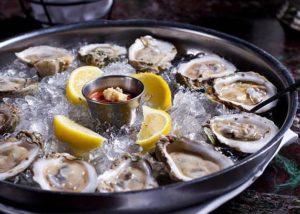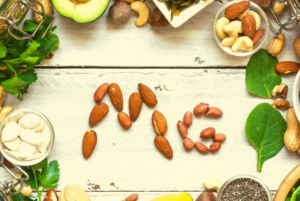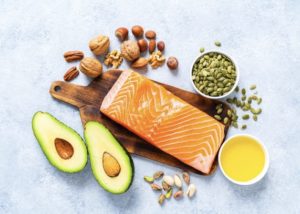- Home
- /
- Meal Cooking
- /
- Oil Smoke Point
- /
- Oil Smoke Point: Unveiling...
In the realm of culinary arts, the choice of cooking oil plays a pivotal role in determining the flavor, texture, and overall success of a dish. One crucial factor that often goes unnoticed by home cooks and professional chefs alike is the smoke point of oils. The smoke point is not just a number; it’s a delicate balance between chemistry and artistry that can significantly impact the outcome of your culinary creations.
In the kitchen, where the alchemy of flavors and textures unfolds, understanding the subtle science of cooking oils is akin to wielding a conductor’s baton in a symphony. The smoke point, that clandestine yet pivotal number, serves as a compass in this gastronomic journey, guiding us through the harmonious interplay of heat, molecular transformations, and culinary artistry.
Embarking on a culinary expedition requires not only an appreciation for the diverse oils that grace our pantry shelves but also a keen awareness of their smoke points—a symphony of temperatures that dictates the possibilities and limitations of our culinary creations. From the robust crescendo of high smoke point oils suitable for fiery stir-fries to the delicate notes of low smoke point oils ideal for nuanced sautés, each oil brings its unique melody to the culinary orchestra.
Join us as we delve into the aromatic world of oils, unraveling the mysteries behind their smoke points. Through this journey, we’ll not only uncover the science behind the smoke point but also explore the diverse personalities of oils, each with its distinct role in crafting the gastronomic masterpiece that is your next culinary creation. The stage is set, the oils are waiting, and the symphony of flavors is about to begin. Welcome to the captivating realm of oils and their smoke points—a culinary symphony waiting to be conducted.
1. Understanding the Oil Smoke Point
The smoke point of an oil refers to the temperature at which it begins to break down and produce visible smoke. This phenomenon is not merely a matter of aesthetics; it signifies a chemical transformation in the oil’s composition. As the oil exceeds its smoke point, it undergoes a process called thermal decomposition, leading to the release of volatile compounds, a change in flavor, and the formation of potentially harmful substances.
1.1 Revelations in Culinary Chemistry: Decoding the Smoke Point of Oils
The smoke point of cooking oils is not just a mere number; it is a gateway into the intricate dance of chemistry and culinary craftsmanship. At its core, the smoke point represents the temperature at which an oil begins to break down and emit visible smoke. This pivotal moment is a result of the complex molecular transformations that occur within the oil when subjected to heat.
1.2. The Symphony of Flavors: Different Oils, Diverse Smoke Points
The composition of cooking oils consists of various fatty acids, each with its own set of chemical characteristics. As the temperature rises, these fatty acids undergo thermal decomposition. Bonds break, volatile compounds are released, and the oil transitions from a stable liquid to a more volatile state. The smoke point, therefore, marks the threshold between controlled cooking and a chemical metamorphosis that not only alters the flavor and aroma of the oil but can also introduce potentially harmful substances into the culinary equation.
1.3. Beyond Numbers: The Language of Heat in Culinary Alchemy
Beyond the immediate sensory changes, understanding the smoke point unveils a delicate balance between maintaining the integrity of the oil and achieving desired cooking outcomes. It guides chefs and home cooks alike in choosing the right oil for specific culinary techniques, ensuring that the chosen oil can withstand the heat required for a particular dish without sacrificing its nutritional value or introducing unwanted flavors. In essence, comprehending the smoke point is akin to deciphering a secret code written in the language of molecules, offering a key to unlocking the full potential of oils in the kitchen.
2. The Health Impact of Low Smoke Point Oils in Stir-Frying and Deep-Frying
While culinary enthusiasts may appreciate the nuanced flavors that various oils bring to their dishes, it’s essential to consider the health implications, especially when it comes to the choice of cooking oils for high-heat methods like stir-frying and deep-frying. Using oils with low smoke points in these applications can have adverse effects on both the nutritional quality of the food and the well-being of those consuming it.
2.1. Formation of Harmful Compounds
Oils with low smoke points, when subjected to high temperatures, undergo a process known as thermal decomposition. This breakdown leads to the release of smoke and the formation of potentially harmful compounds, including free radicals and acrolein. Free radicals are linked to oxidative stress, while acrolein is associated with respiratory and eye irritation.
2.2. Reduced Nutritional Value
High-heat cooking with oils that have low smoke points can cause the degradation of essential nutrients present in the oil. This degradation diminishes the nutritional value of the oil, impacting its potential health benefits. Oils rich in unsaturated fats, which are often preferred for their heart-healthy properties, may lose some of their beneficial qualities when exposed to high temperatures.
2.3. Increased Risk of Trans Fats
Some low smoke point oils, especially those containing polyunsaturated fats, are prone to forming trans fats during high-temperature cooking. Trans fats are associated with an increased risk of cardiovascular diseases and other health issues. Opting for oils with higher smoke points helps minimize the formation of trans fats during cooking.
About trans fats read in the article: Trans Fats: What matters Frying
2.4. Oxidation and Rancidity
Cooking oils with low smoke points are more susceptible to oxidation, a process that not only alters the flavor of the oil but also produces rancid compounds. Oxidized oils may contribute to inflammation in the body, and their consumption is linked to various health concerns, including cardiovascular issues.
2.5. Respiratory Health Concerns
The smoke released when cooking with oils beyond their smoke points can contain particulate matter and potentially harmful fumes. Prolonged exposure to such fumes may pose respiratory health risks, especially in poorly ventilated spaces.
2.6. Best Practices for Healthier Cooking
- Choose oils with higher smoke points for stir-frying and deep-frying, such as peanut oil, canola oil, or grapeseed oil.
- Be mindful of the specific smoke point of the oil you are using and avoid exceeding it during cooking.
- Use oils rich in monounsaturated fats (e.g., olive oil) for low to medium-heat applications to preserve their health benefits.
In conclusion, the choice of cooking oils is not only about flavor but also about the impact on health. Opting for oils with higher smoke points when engaging in high-heat cooking methods like stir-frying and deep-frying is a prudent decision, helping to minimize the formation of harmful compounds and preserve the nutritional integrity of the oils and the foods they enhance. Prioritizing health-conscious choices in the kitchen contributes to both the enjoyment of flavorful meals and the well-being of those savoring them.
3. Diverse Oils, Diverse Smoke Points
Different oils boast distinct smoke points, making them suitable for specific cooking techniques. For instance, oils with higher smoke points are ideal for deep-frying and high-heat cooking, while those with lower smoke points are better suited for sautéing and low-heat applications.
| Cooking Oil | Smoke Point (°F) | Smoke Point (°C) | Note |
|---|---|---|---|
| Avocado Oil | 520 | 270 | |
| Peanut Oil | 440 | 227 | |
| Canola Oil | 400 | 204 | Typically refined |
| Grapeseed Oil | 420 | 216 | |
| Coconut Oil (refined) | 450 | 232 | |
| Olive Oil (extra virgin) | 375 | 190 | Not suitable for cooking |
| Olive Oil (light) | 468 | 242 | |
| Sesame Oil (toasted) | 410 | 210 | |
| Sunflower Oil | 440 | 227 | Typically refined |
| Safflower Oil | 440 | 227 | Typically refined |
| Corn Oil | 450 | 232 | Typically refined |
| Soybean Oil | 450 | 232 | Typically refined |
| Walnut Oil | 320 | 160 | |
| Flaxseed Oil | 225 | 107 | |
| Grapeseed Oil | 420 | 216 | |
| Almond Oil | 420 | 216 | |
| Rice Bran Oil | 450 | 232 | Typically refined |
| Cottonseed Oil | 420 | 216 | Typically refined |
| Hemp Oil | 330 | 166 | |
| Butter | 350 | 177 | Not typically used for cooking |
| Lard | 370 | 188 | Not typically used for high-heat cooking |
4. The Temperature on the Frying Pan: A Culinary Alchemy
The frying pan, a ubiquitous tool in the kitchen, transforms into a stage where culinary alchemy unfolds, guided by the magic of temperature control and the ticking clock. The art of cooking involves a symphony of temperatures and time, each note playing a crucial role in shaping the final composition of flavors and textures.
4.1. Gentle Simmering at Low Heat
Substances: Delicate ingredients, such as onions, garlic, and herbs.
Cooking Method: Gentle sautéing or keeping food warm without rapid cooking.
Time Consideration: Low heat allows for longer cooking times, ideal for developing complex flavors in slow-cooked dishes.
4.2. Versatile Sautéing at Medium-Low to Medium Heat
Substances: Vegetables, eggs, and proteins like chicken or fish.
Cooking Method: Sautéing, browning meats, cooking eggs, and various stovetop cooking techniques.
Time Consideration: Medium heat strikes a balance, allowing efficient cooking without compromising flavor development. Cooking times are moderate.
4.3. Dramatic Stir-Frying at Medium-High Heat
Substances: Ingredients for stir-frying, such as thinly sliced vegetables and small pieces of meat.
Cooking Method: Stir-frying, searing, and quickly cooking ingredients without burning.
Time Consideration: High heat facilitates rapid cooking, making stir-frying a swift culinary dance. Ingredients are cooked in a matter of minutes.
4.4. Intense Searing at High Heat
Substances: Larger cuts of meat, such as steaks and roasts.
Cooking Method: Searing, achieving a caramelized crust on proteins, and rapid cooking at high temperatures.
Time Consideration: High heat allows for quick searing, locking in juices and flavors. Cooking times are shorter, preserving the integrity of the ingredients.
In this symphony of temperatures and time, the frying pan becomes a conductor’s wand, guiding the orchestra of ingredients to create culinary symphonies. The controlled modulation of heat, along with mindful consideration of cooking times, is not merely a technical aspect of cooking; it is the conductor’s finesse, orchestrating the harmonious blend of flavors and textures that defines the artistry of a well-cooked dish. Each flicker of the flame and tick of the clock tells a story, and the frying pan, with its varied temperatures and precise timing, becomes the storyteller’s stage in the theater of gastronomy.
5. Special considerations
The heat setting on the gas stove controls the rate at which heat is transferred to the pan, and subsequently, to the oil. While it’s true that over a long duration, the oil will eventually reach a similar temperature regardless of whether it started at a low or high heat setting, there are some important nuances
5.1. Time Consideration
If you start with low heat, it will take a longer time for the oil to reach a high temperature compared to starting with high heat. High heat accelerates the process, achieving the desired temperature more rapidly. This is particularly relevant for time-sensitive cooking methods like searing or stir-frying.
5.2. Energy Efficiency
Using high heat initially and then reducing it as needed can be more energy-efficient. Once the oil reaches the desired temperature, you can lower the heat to maintain that temperature without constantly using high gas levels. This approach conserves energy and allows for more precise temperature control.
5.3. Breakdown
Prolonged exposure to high heat, even if started from a low setting, can cause oil to break down and reach its smoke point. This can lead to undesirable changes in the oil’s composition and the development of off-flavors. Monitoring the temperature and adjusting the heat source accordingly helps prevent this.
In summary, while it’s true that given enough time, the oil in the pan will eventually reach a similar temperature regardless of the initial heat setting, the choice of heat setting impacts the cooking process in terms of time, energy efficiency, and the potential for oil breakdown. It’s a balance between achieving the desired temperature efficiently and maintaining the quality of the cooking oil.
It’s important to note that these temperature ranges are general guidelines, and actual temperatures can vary based on the specific cooking equipment and the desired outcomes. Additionally, the choice of oil and its smoke point should be considered to avoid the degradation of the oil and the production of potentially harmful substances during high-temperature cooking. Adjusting the heat as needed and paying attention to visual and olfactory cues are essential for successful and delicious culinary results.
6. Best Practices for Cooking with Oils
6.1 Match the Oil to the Cooking Method
Use high smoke point oils for high-heat cooking and low smoke point oils for gentle sautés or as finishing touches.
6.2 Store Oils Properly
Exposure to light, heat, and air can degrade oil quality. Store oils in a cool, dark place and tightly seal them when not in use.
6.3 Pay Attention to Signs of Overheating
The development of smoke and a bitter taste indicates that the oil has surpassed its smoke point. Discard and start anew to preserve the quality of your dish.
Conclusion: Harmony in the Kitchen: Concluding the Ode to Oil Smoke Points
As we delve into the intricate world of cooking oils, understanding the smoke point emerges as a key element in the culinary journey. By choosing the right oil for the right application, chefs and home cooks alike can elevate their dishes, creating masterpieces that balance the science of cooking with the art of flavor. So, the next time you step into the kitchen, let the smoke point be your guide, guiding you toward a symphony of flavors and culinary perfection.
Culinary Crescendo: Navigating the Overture of Oil Smoke Points
As our exploration into the intricate dance of oil smoke points draws to a close, we find ourselves standing at the intersection of science and culinary poetry. The symphony of temperatures, dictated by the nuanced artistry of each oil’s smoke point, has unveiled a world of possibilities and considerations in the kitchen.
Harmonizing Oils: Resonating Notes in the Culinary Symphony
In this gastronomic journey, we’ve witnessed the transformation of oils, from the gentle rise of low smoke points orchestrating subtle sautés to the grand crescendo of high smoke points commanding the stage in intense stir-fries and deep-fries. It’s a harmonious convergence of flavor preservation, molecular dynamics, and the chef’s deft hand in wielding the appropriate oil for the culinary masterpiece at hand.
Concluding Refrain: Unveiling the Culinary Epilogue of Oil Smoke Points
Yet, as we bid adieu to the exploration of smoke points, let it be a reminder that the culinary symphony is not confined to numbers alone. It’s a sensory ballet where the sizzle in the pan, the aroma wafting through the kitchen, and the tantalizing taste on the palate all contribute to the grand performance.
Symphonic Savor: Echoes of Sensory Mastery in Culinary Harmony
Armed with the knowledge of smoke points, we embark on our kitchen adventures with newfound confidence. We choose oils not merely based on numbers but as integral players in the culinary orchestra, each bringing its unique timbre to the symphony of flavors. So, whether we opt for the high notes of avocado oil in a blazing stir-fry or the delicate tones of olive oil in a gentle sauté, let the culinary symphony continue, creating an ever-evolving masterpiece on our plates and palates. Here’s to the harmonious journey of oil smoke points—a culinary odyssey where science meets taste, and every dish is a note in the symphony of our gastronomic experiences.
































































0 Comments